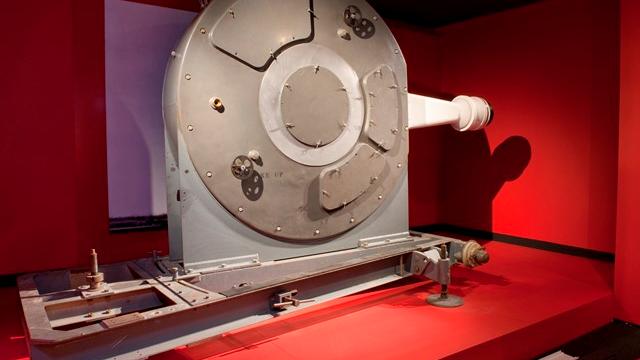There’s a truly monstrous camera at the “Churchill’s Scientists” exhibition at London’s Science Museum right now. The C4 Rotating Mirror High Speed Camera was developed at the end of World War II to study explosive reactions.
Picture: Eleanor Blanchette, Communications Assistant, photographed with a C4 Rotating Mirror High Speed Camera at the press preview of “Churchill’s Scientists” the UK’s first exhibition on Churchill and science to mark 50th anniversary of his death (Science Museum)
Later, in the ’50s, the camera was upgraded the Atomic Weapons Research Establishment (AWRE) in order to study the British atomic bomb explosions.
To avoid vibrations — and thus shaky images — the C4 AWRE camera is bolted to massive rectangular steel frame. The camera uses a mirror rotating at a very high and constant velocity driven by a small helium turbine, or an electric motor. The objective lens forms an image if the object is on the face of the mirror. As the mirror rotates, it reflects successive images of the object through a couple of secondary lenses around the edge of the mirror onto a long photographic film strip attached to the inner wall of a cylindric metal drum:
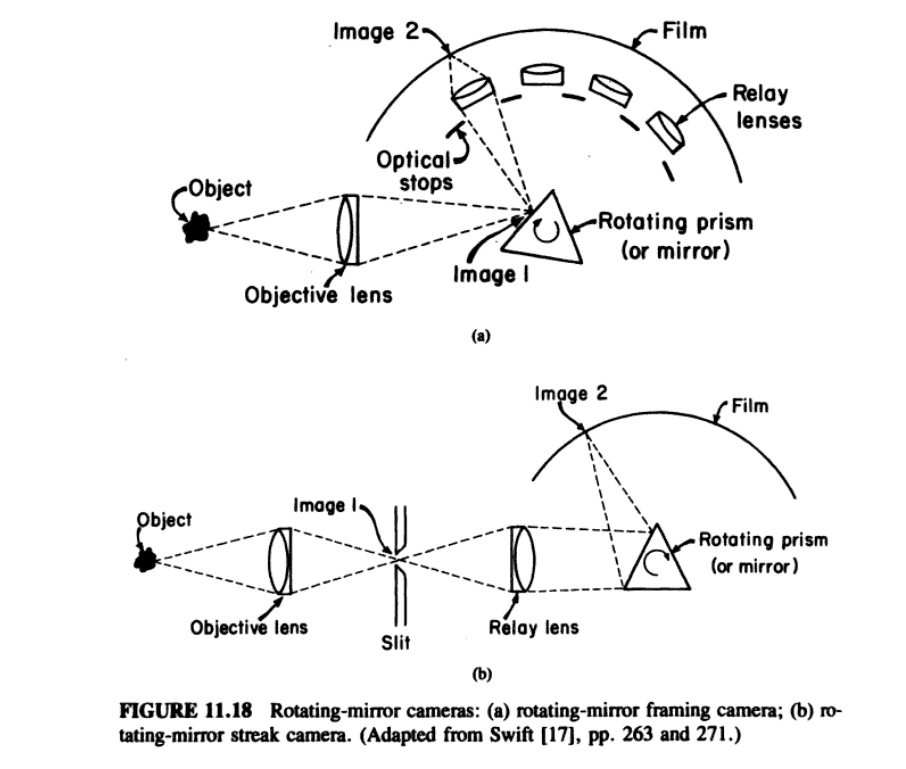
Picture: Dynamic Behaviour of Materials by Marc A. Meyers. John Wiley & Sons, Inc., 1994.
Thanks to this method, framing speeds of 200,000 frames/sec up to 10 million frames/sec can be obtained, although only for a very short period of time — less than a millisecond. At these high framing rates the recorded event must be illuminated by an intense source of light, or must be highly luminous itself. Just like an atomic flash during the first milliseconds of a nuclear bomb test:
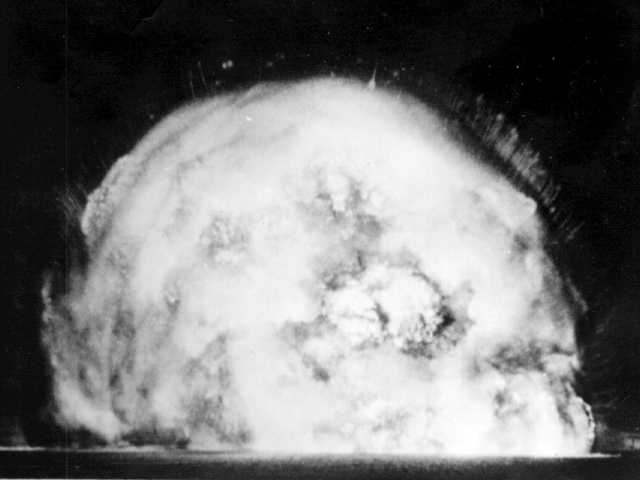
Hurricane, the first British nuclear test, a 25 kilotons device detonated in a lagoon on Trimouille Island on Oct 3, 1952. Image source: Sonicbomb

United Kingdom’s Buffalo series test No.3. “Kite”, a 3 kiloton airdrop nuclear bomb, at the Maralinga site in South Australia, Oct 11, 1956. Image source: Sonicbomb
The Atomic Weapons Research Establishment was operational until 1972. Its primary task was to simulate the conditions of testing and using nuclear weapons of the United Kingdom. However the science behind the C4 high speed camera lived on after the end of Cold War, the device was used in several science projects where high speed photography were required to analyse studied phenomena happening at fractions of seconds.
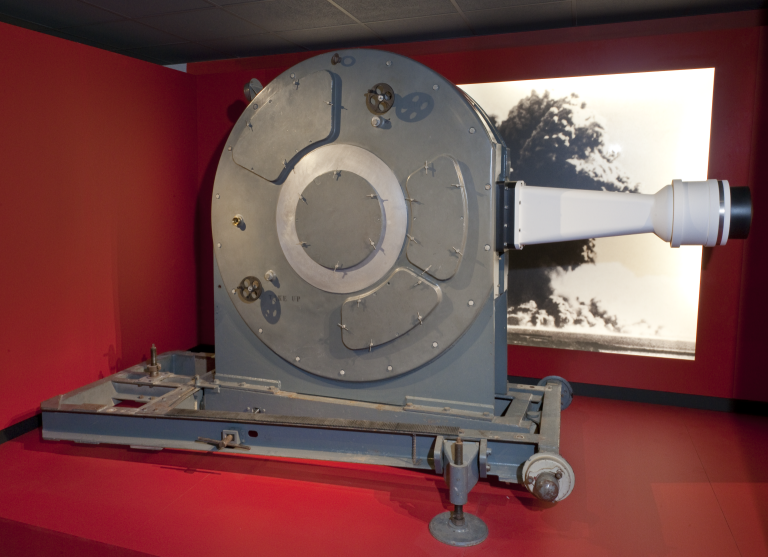
Picture: Science Museum
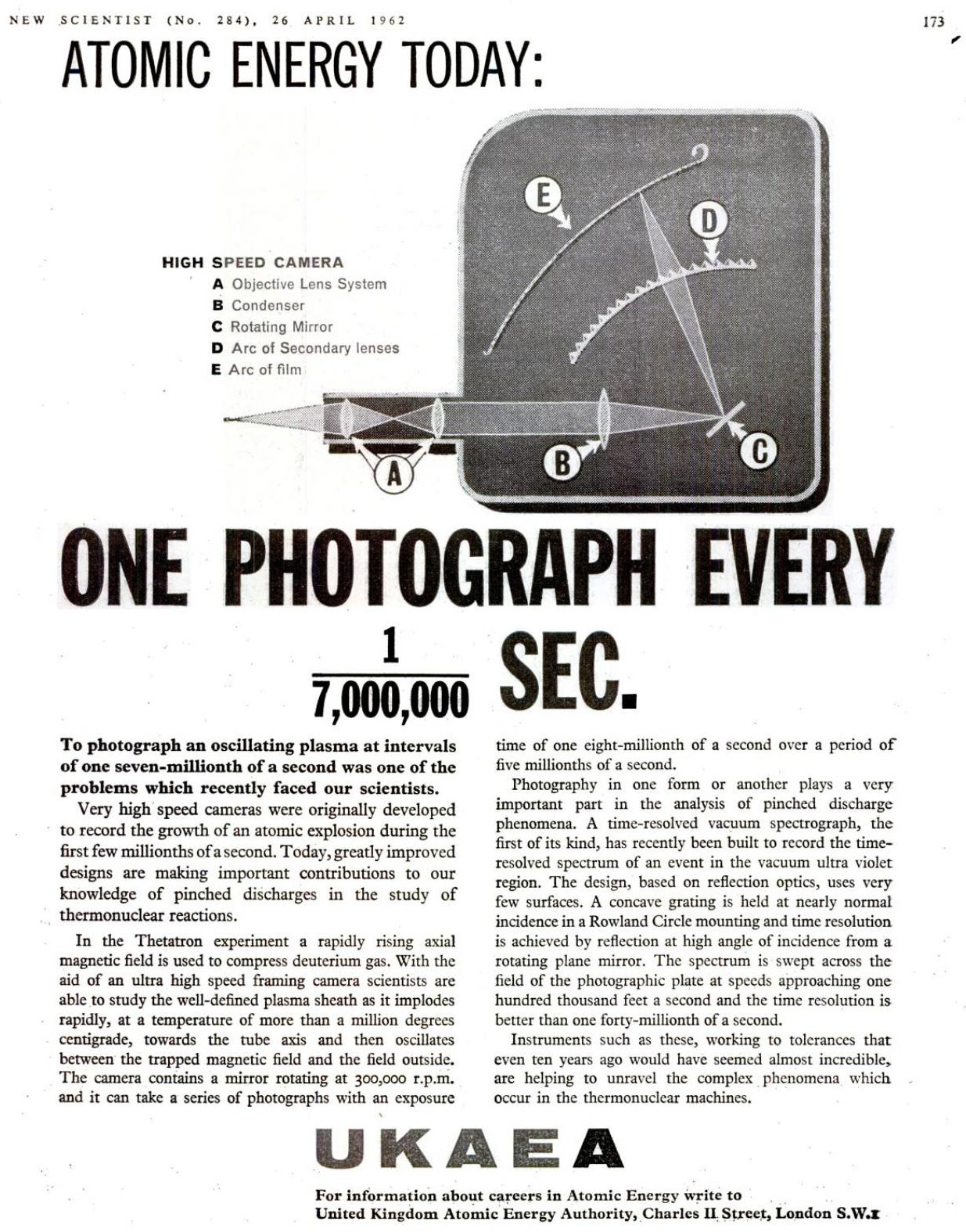
Recruiting ad in New Scientist, 26 Apr 1962
